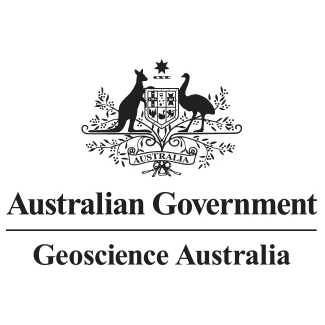Full description
The footprint of a mineral system is potentially detectable at a variety of scales, from the ore deposit to the Earth’s crust and lithosphere. In order to map these systems, Geoscience Australia has undertaken a series of integrated studies to identify key regions of mineral potential using new data from the Exploring for the Future program together with legacy datasets.
The recently acquired long-period magnetotellurics (MT) data under the national-scale AusLAMP project mapped a lithospheric scale electrical conductivity anomaly to the east of Tennant Creek. This deep anomaly may represent a potential source region for mineral systems in the crust.
In order to refine the geometry of this anomaly, high-resolution broadband and audio MT data were acquired at 131 stations in the East Tennant region and were released in Dec 2019 (http://dx.doi.org/10.26186/5df80d8615367). We have used these high-resolution MT data to produce a new 3D conductivity model to investigate crustal architecture and to link to mineral potential. The model revealed two prominent conductors in the resistive host, whose combined responses link to the deeper lithospheric-scale conductivity anomaly mapped in the broader AusLAMP model.
The resistivity contrasts coincide with the major faults that have been interpreted from seismic reflection and potential field data. Most importantly, the conductive structures extend from the lower crust to near-surface, strongly suggesting that the major faults are deep penetrating structures that potentially act as pathways for transporting metalliferous fluids to the upper crust where they can form mineral deposits. Given the geological setting, these results suggest that the mineral prospectivity for iron oxide copper-gold deposits is enhanced in the vicinity of the major faults in the region.
This release package includes the 3D conductivity model produced using ModEM code in sGrid format and Geo-referenced depth slices in .tif format.
Lineage
Maintenance and Update Frequency: asNeededCreated: 12 03 2020
Issued: 23 03 2020
text: westlimit=135.2; southlimit=-20; eastlimit=136.8; northlimit=-18.5
User Contributed Tags
Login to tag this record with meaningful keywords to make it easier to discover
Download the depth slices (tif) [25.8 MB]
uri :
https://d28rz98at9flks.cloudfront.net/135011/135011_00_0.zip![]()
Download the model files (sGrid) [19.4 MB]
uri :
https://d28rz98at9flks.cloudfront.net/135011/135011_01_0.zip![]()
Download the readme file (pdf) [43.9 KB]
uri :
https://d28rz98at9flks.cloudfront.net/135011/135011_02_01.pdf![]()
East Tennant Magnetotelluric Survey, Northern Territory, Australia
local : 132016
Probabilistic Inversion of Audio Magnetotelluric Data in the East Tennant region, Northern Territory, Australia
local : 144339
- DOI : 10.26186/135011

- Local : pid.geoscience.gov.au/dataset/ga/135011
- global : bce5dc4e-db8d-4611-a117-923ce2c9fdef


